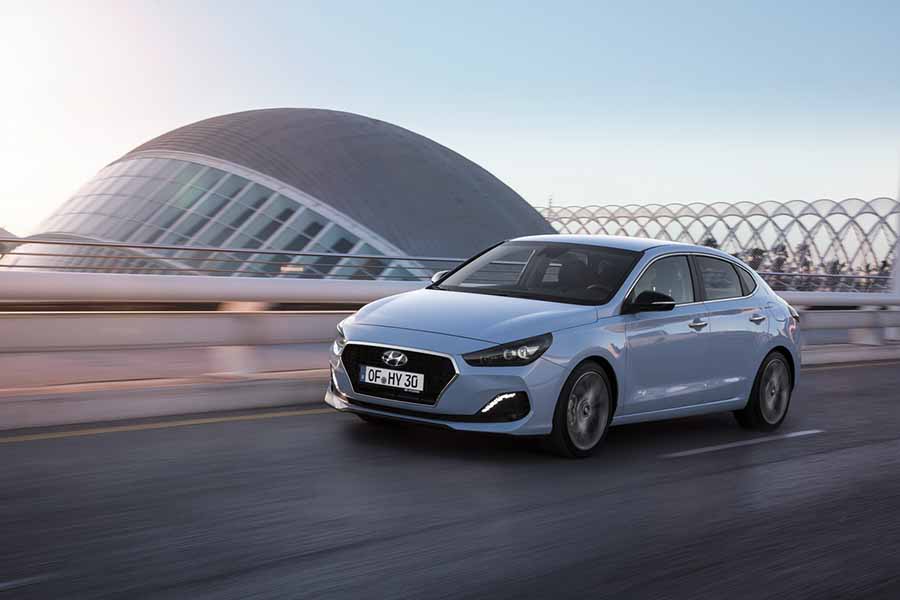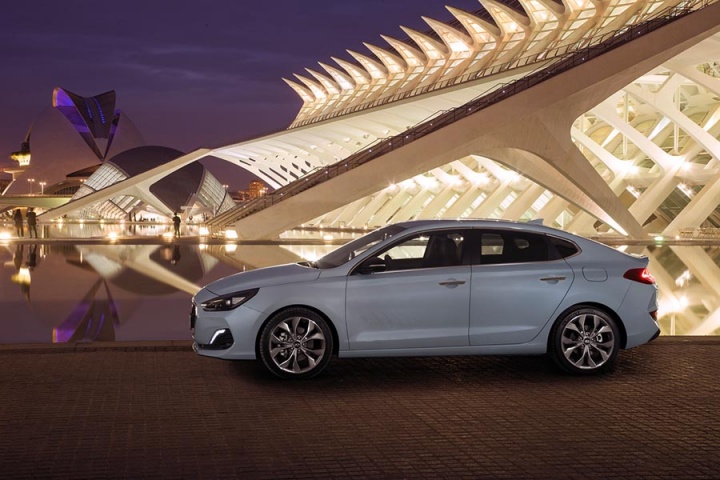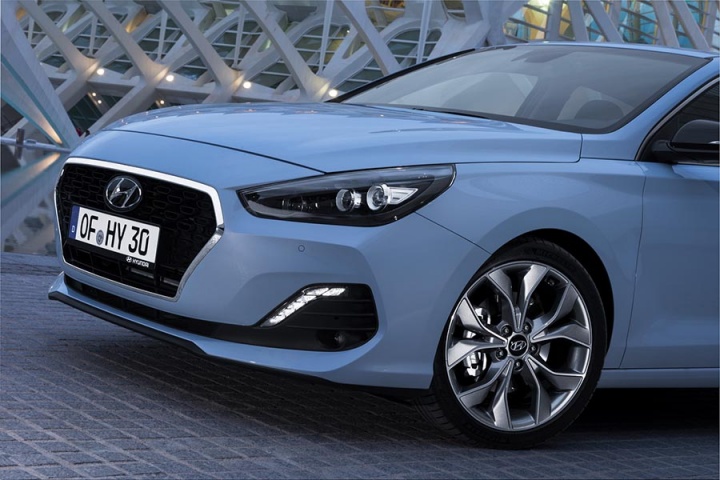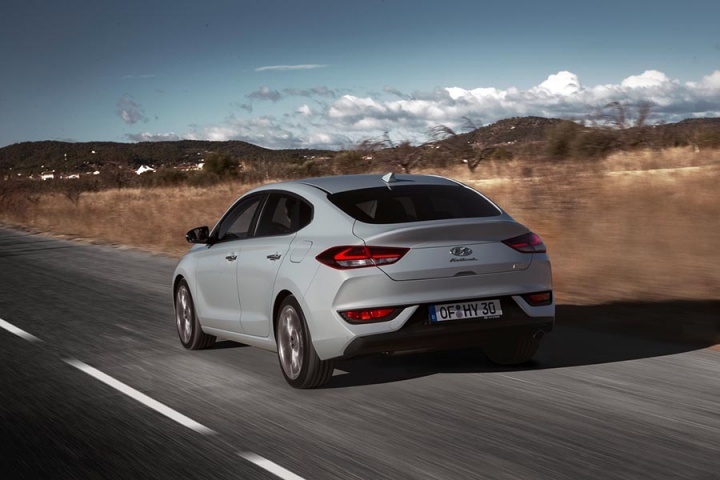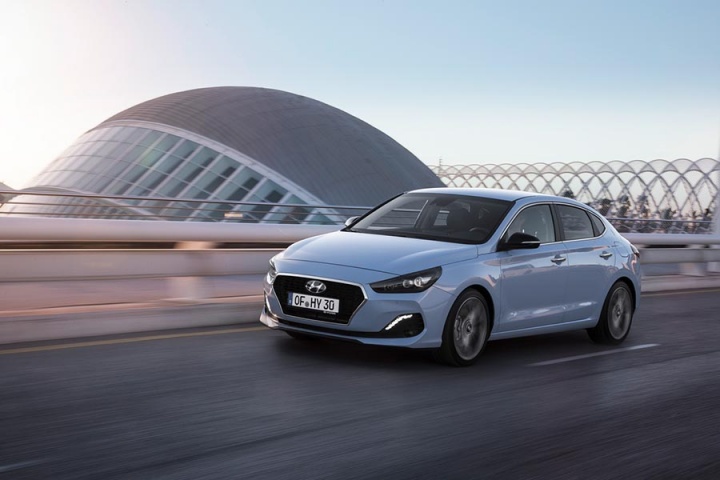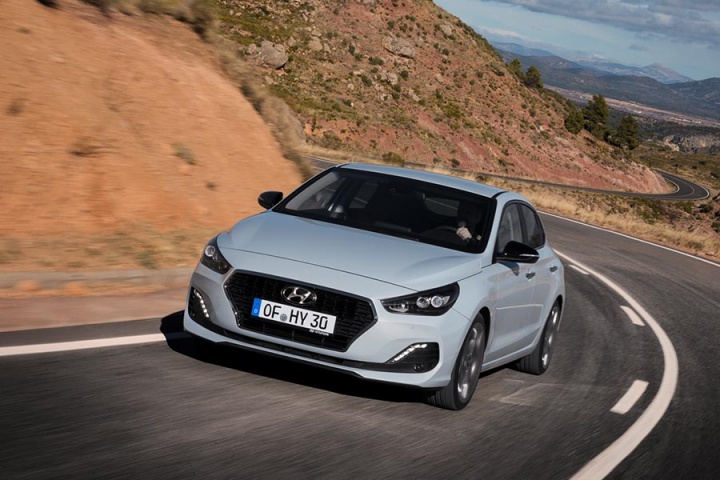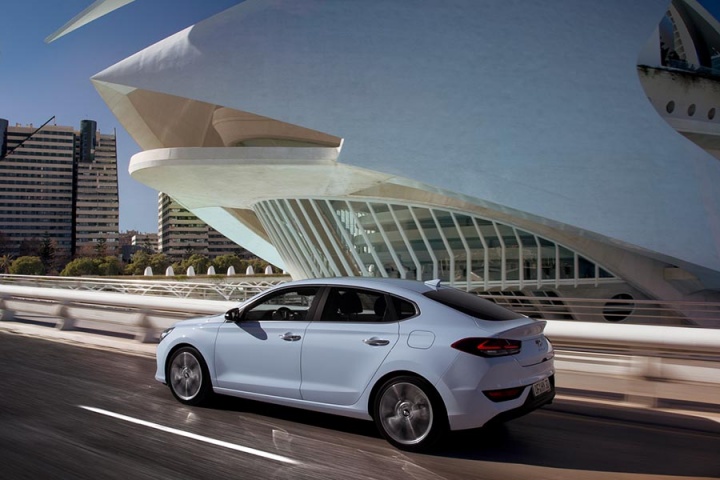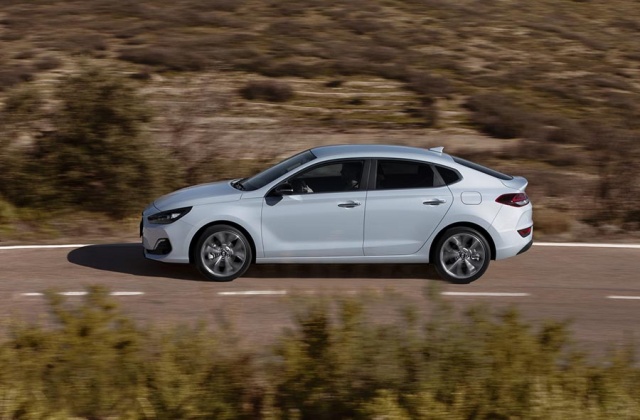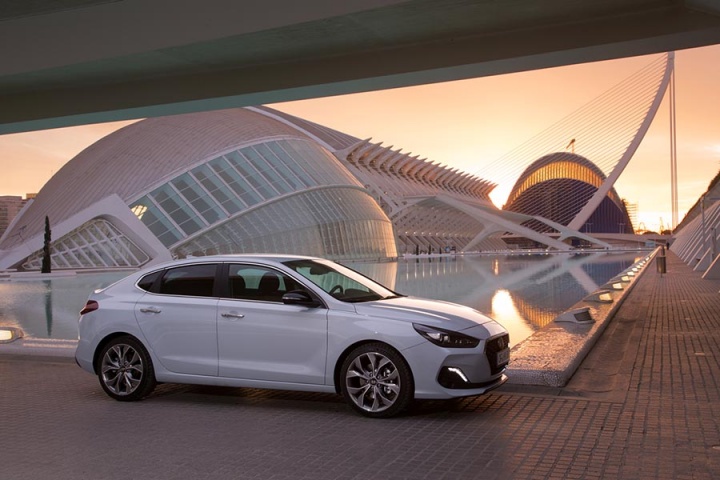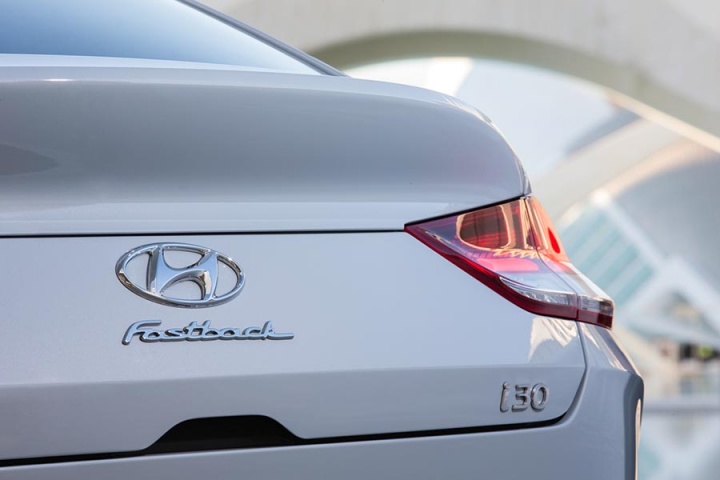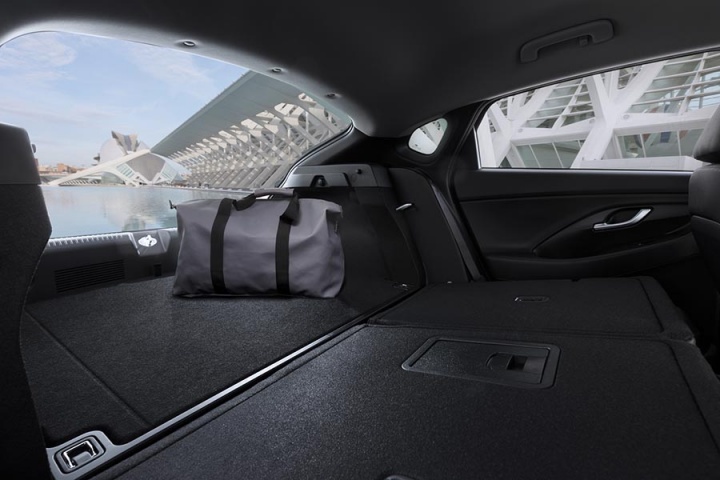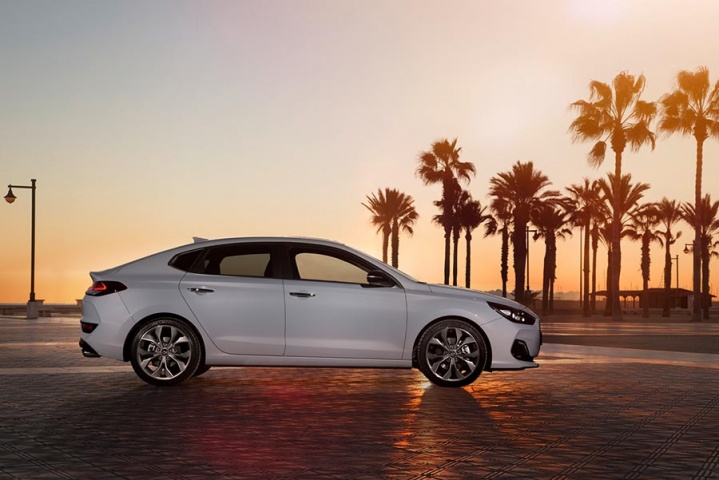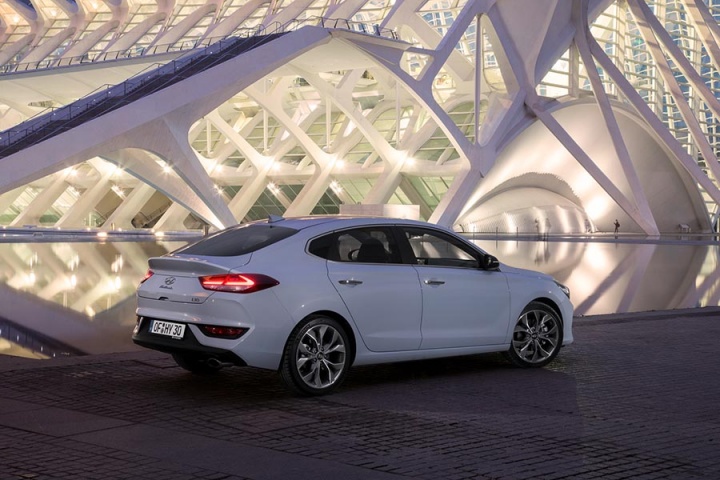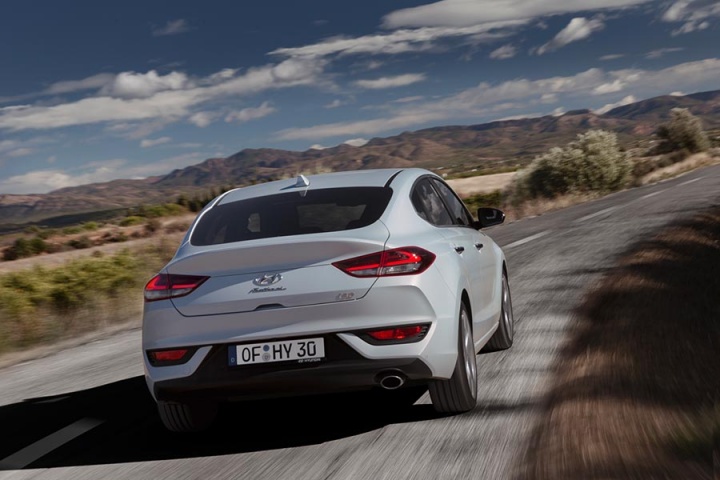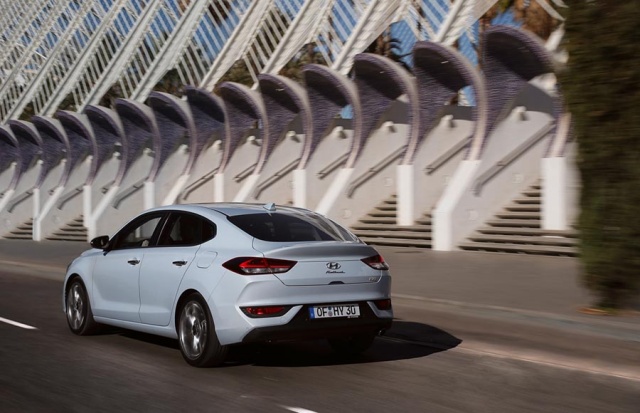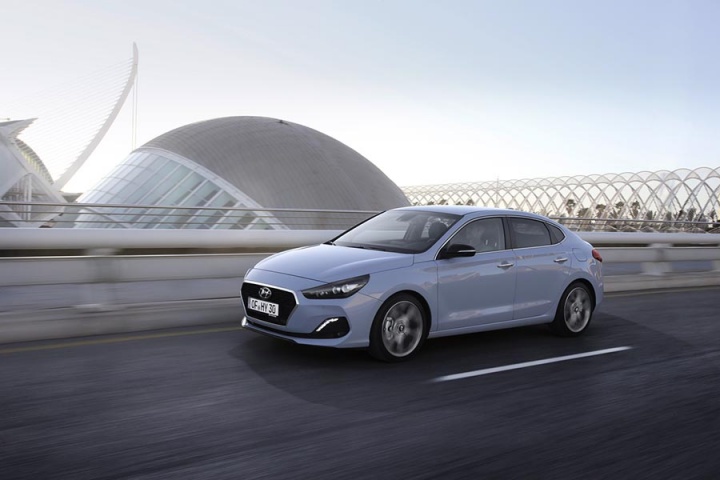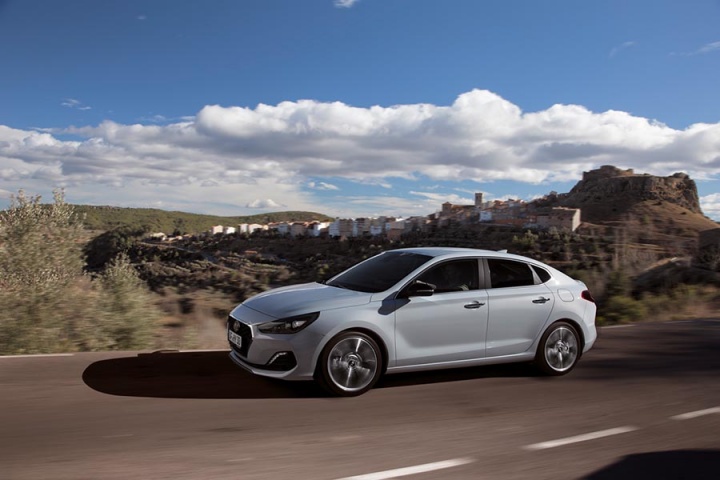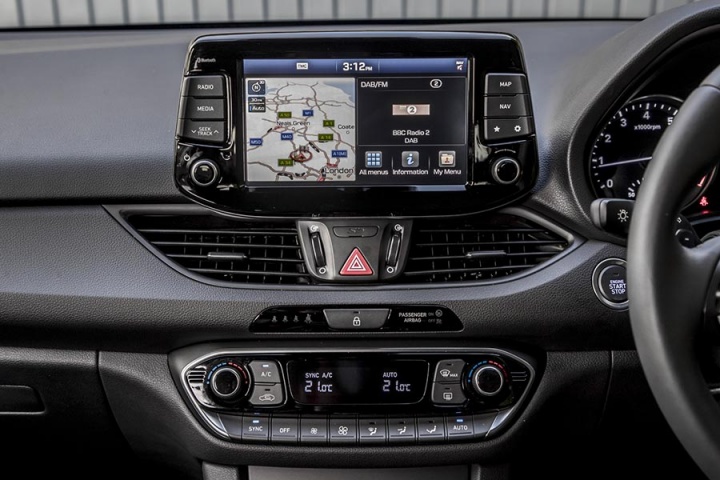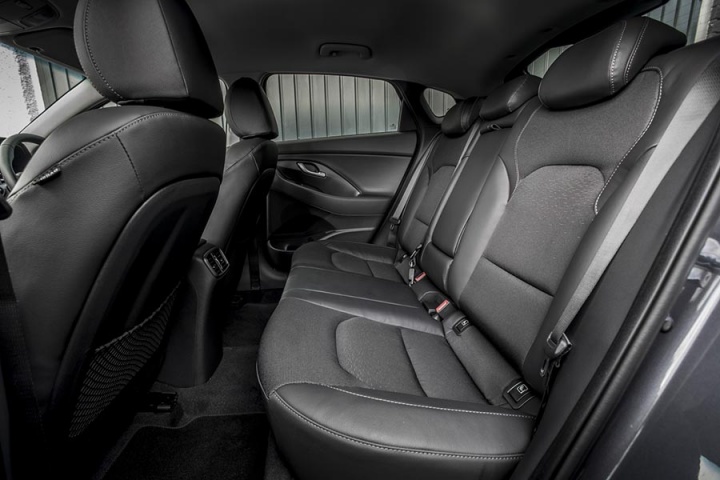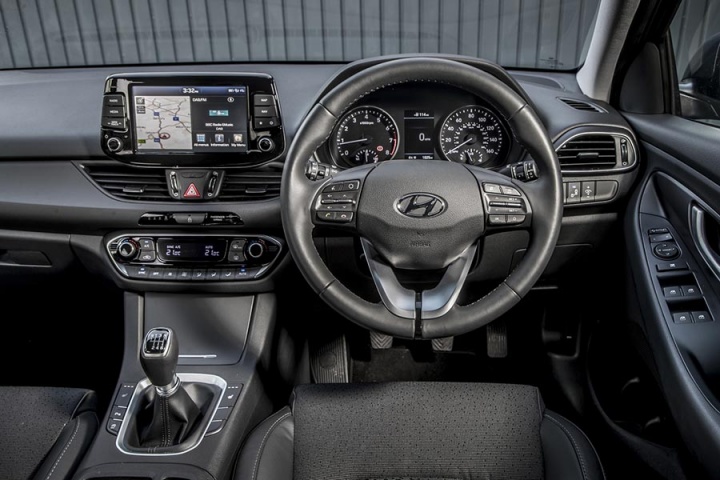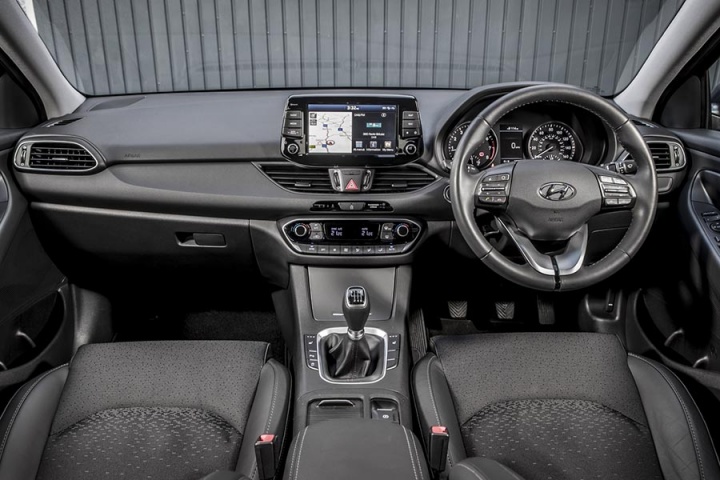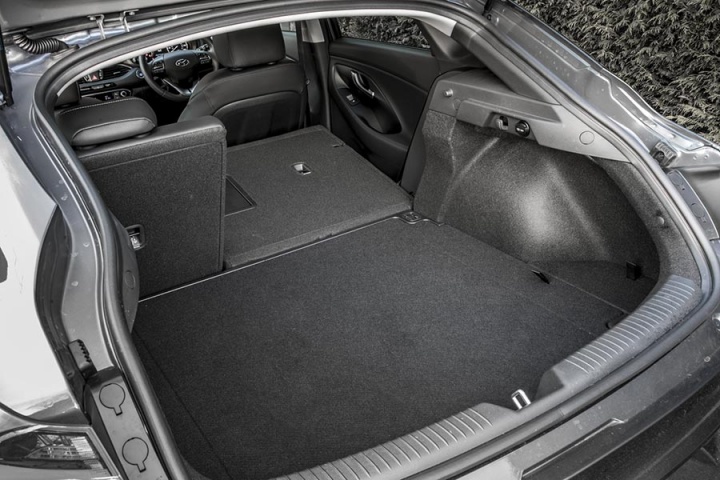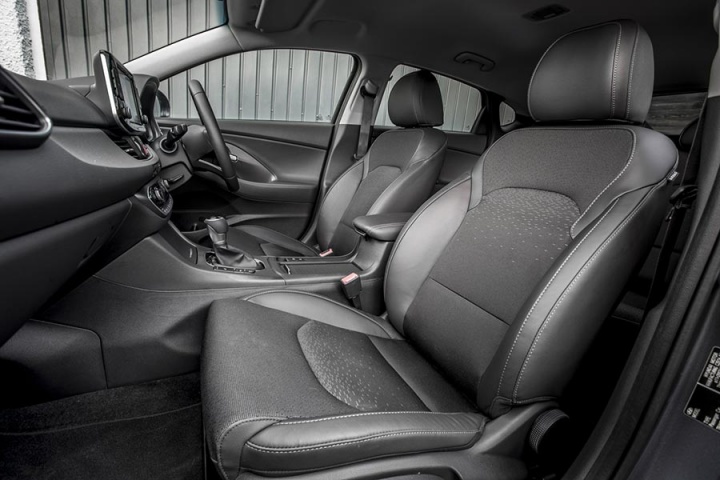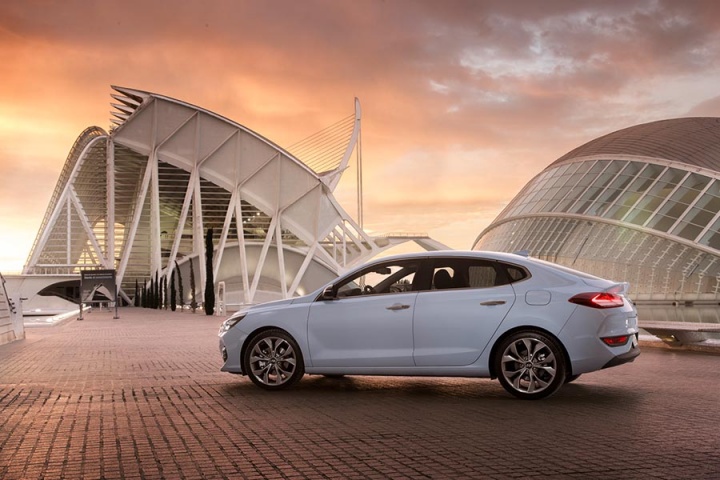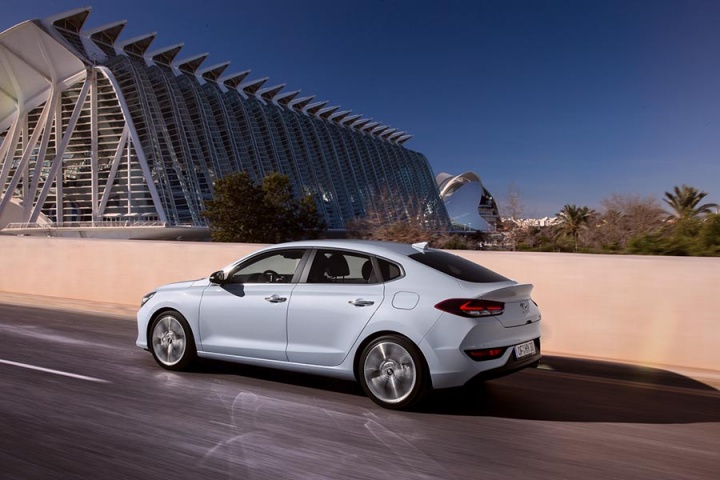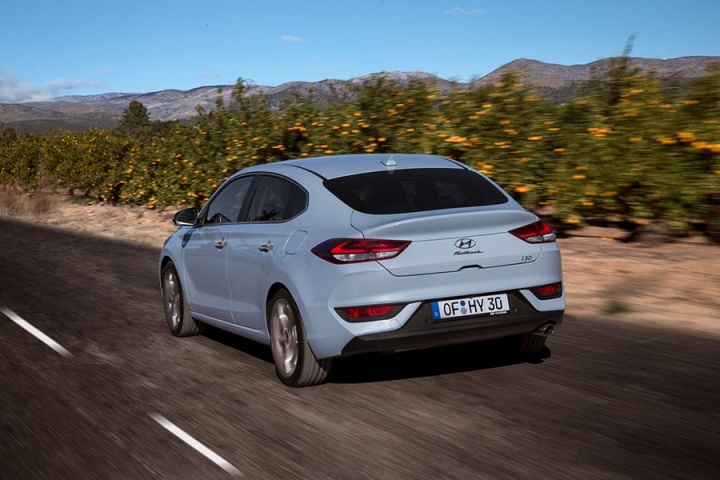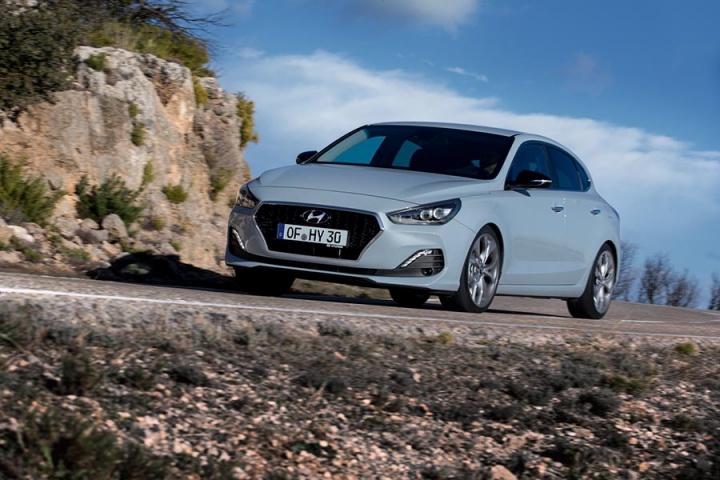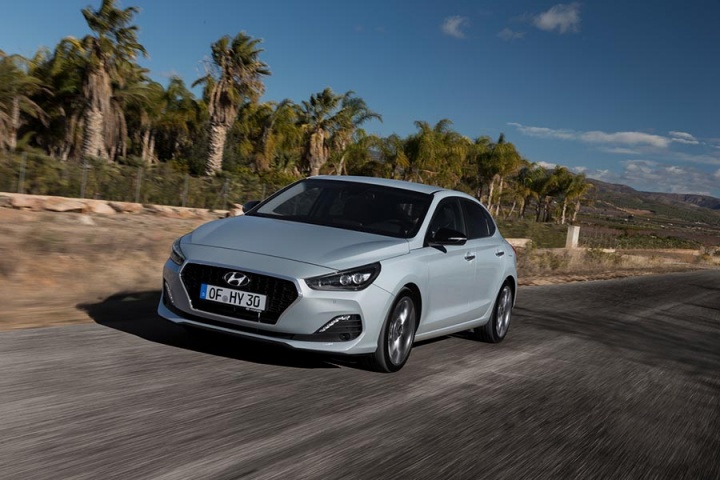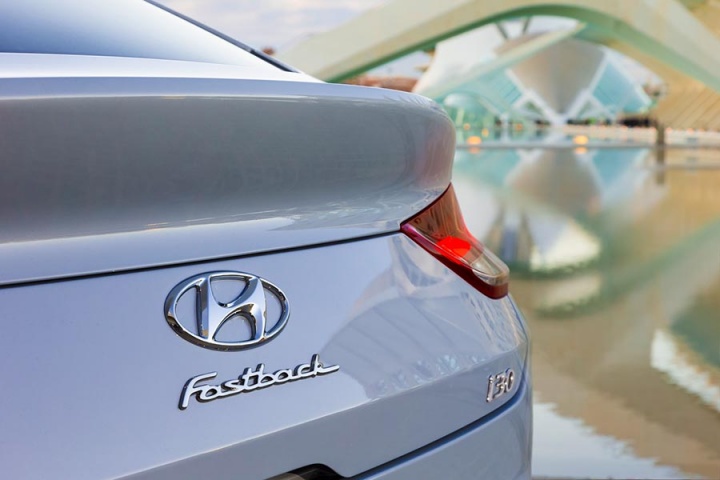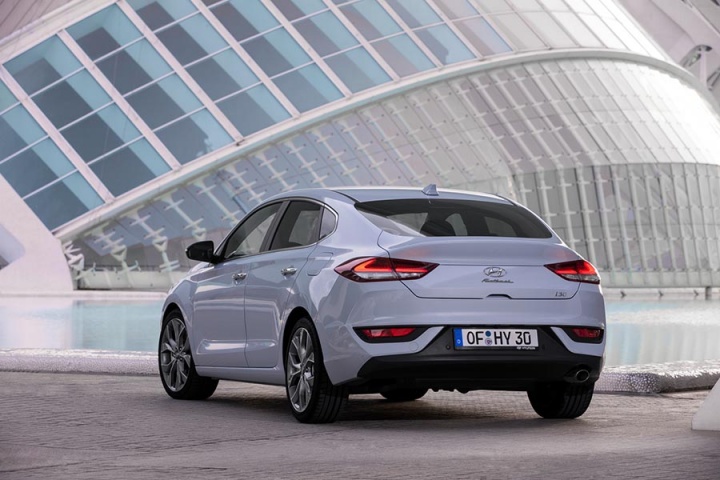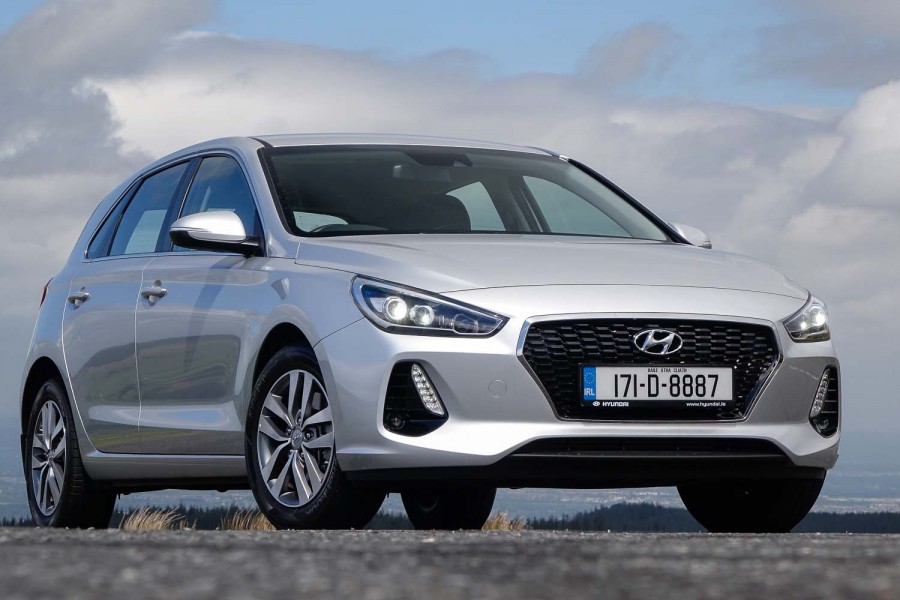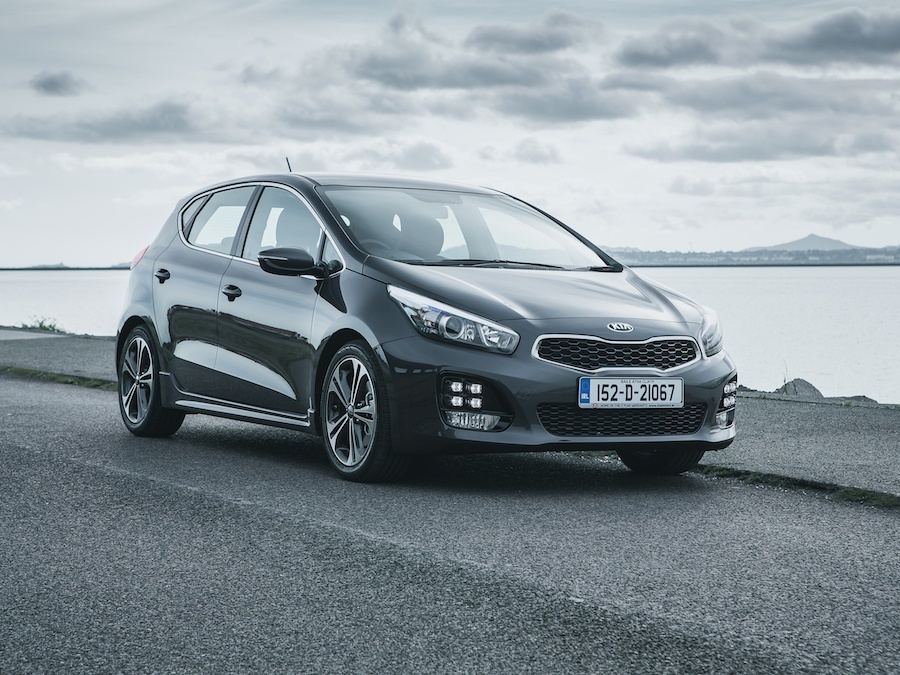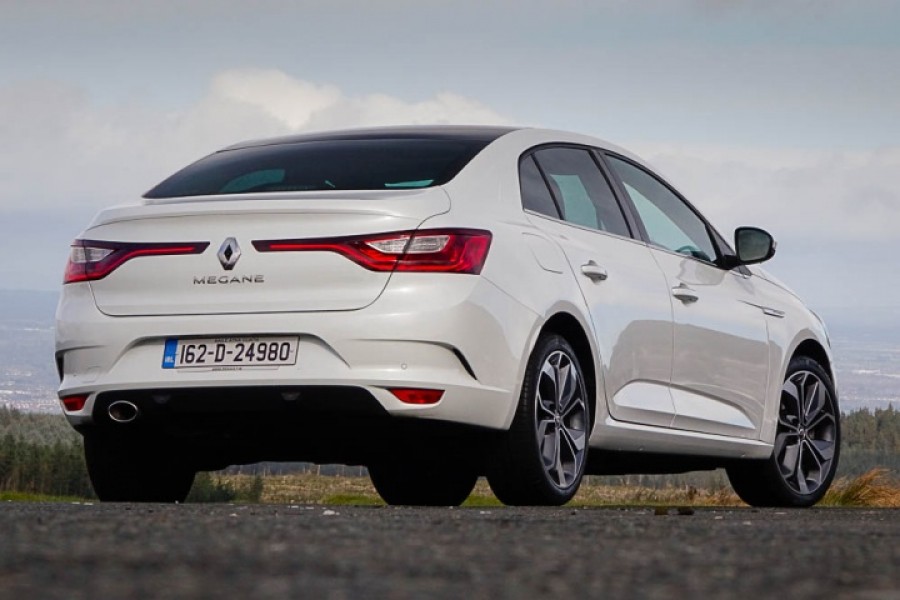Slotting into the gap between the i30 hatch and estate, the Hyundai i30 Fastback offers an almost saloon-like silhouette to those seeking slightly more luggage space. There aren't many others to rival this shape, with only the Renault Megane Grand Coupe and smaller Skoda Rapid Spaceback coming close.
In the metal
We tend to like giving names to things, and being able to sort them into their respective pigeonholes, but the Hyundai i30 Fastback is somewhat unique. This fourth variant of the i30 family (if you include the i30 N hot hatch), straddles the boundary between hatchback and saloon. The elongated rear end brings with it a hatchback tailgate and a more sloping roofline.
In comparison to the more conventional Hyundai i30 hatchback, the rear has been extended by a further 115mm, but is hindered by a high boot lip. The boot capacity grows to 450 litres, an increase of 55 litres when the rear seats remain in place. Due to the shape of the new boot, though, when you drop the rear seats, the overall gain in cargo space is just 48 litres.
Headroom suffices for those of average height in the rear seats, but the roofline has been lowered by 25mm towards the very back. The provision of three places across the rear is useful for short journeys, but whoever draws the short straw to sit in the middle will be perched a little higher. Impinging on foot space in the rear is a low, but wide raised centre section and the inner front seat rails. On a more positive note, the rear doors open to a wide angle and the apertures aren't compromised by the sloping roof.
In the front, it is as per the regular i30, with a good layout and decent ergonomics. Some of the trim panels do look good, but lack in quality feel from the plastics. All of the switchgear is nice to use and has a well-made quality to it.
There is a fair amount of storage around the cabin, with a large enough area in the centre console for your smartphone. This space also offers a wireless charging pad and has a conveniently placed 12-volt power socket and USB port. However, there is just a single USB port in the front and none in the rear, which may be a consideration for some buyers.
Driving it
Unlike the hatchback, the Hyundai i30 Fastback is initially for sale in Ireland with just the 1.0-litre T-GDI petrol engine. As three-cylinder engines go, the Hyundai unit isn't quite at the forefront of refinement and smoothness, but with a 120hp output, there is sufficient power to pull the larger i30 Fastback along and cruise at motorway speeds.
The engine does feel reasonably brisk in urban settings, too. Its maximum torque output of 171Nm arrives at 1,500rpm and continues through to 4,000rpm, so you're almost always in its sweet spot. The free-revving nature of the engine means you will have to show some restraint if you want to get close to the official 5.2 litres/100km combined fuel consumption figure, though.
Only a six-speed manual transmission is available with this engine, and the gearing suits the motor. However, the control weights of the gearbox aren't quite what you'd call slick and it can sometimes feel clunky, a trait that more enthusiastic driving highlights.
The driving position provides plenty of adjustability, with all driver's seats also being height adjustable, while the steering wheel can be set for both height and reach. Forward visibility is good, with the A-pillars angled in a way that minimises any blind spots. Thankfully the side mirrors provide a wide field of vision as there's a fair degree of restriction concerning rearward visibility due to the sloping tail gate's combination of shallow window angle and high boot lid. Compounding this is the lack of a rear wiper, which won't be ideal on mucky roads in winter.
In a move to give the Fastback a different driving feel to the regular five-door i30 the chassis height has come down by five millimetres and the suspension stiffness increased by 15 per cent. While this may help to reduce some of the body roll in corners, the ride quality has suffered. Even though it is equipped with a multi-link rear suspension, the ride quality remains busy, seemingly irrespective of surface. That's probably because the engineers chose more 'performance-orientated' shock absorbers.
Adding to that is the road noise levels that boom through the cabin more than they do in the i30 hatchback. This difference may be amplified by the different cabin shape, as it was found in cars driven on different tyre and wheel sizes.
One aspect of the i30 Fastback's on-road performance that differs between the 1.0-litre and larger-engined 1.4-litre version we also tested was the steering. In the 1.0-litre, the steering calibration doesn't feel as consistent off-centre compared to the other car. It is most noticeable when you begin to turn into a bend, proving vague at first before falling faster into the corner. It isn't severe, but there isn't the same experience with the larger engine. While it won't put many off the car, we just wish there was the same consistency between the different models. Not that it matters if the larger engine is never offered here...
What you get for your money
Currently, Hyundai Ireland lists just one version of the i30 Fastback for sale. Its price, €24,995, loads it with only a €500 premium over the similarly engined i30 hatchback in Deluxe Plus specification. The Fastback features 17-inch alloy wheels and body coloured door handles and inside it comes with a good variety of equipment.
Up front, there's a leather three-spoke multifunction steering wheel with cruise control and a speed limiter function. Keyless entry and engine start aid convenience while the eight-inch touchscreen infotainment system enables smartphone connectivity via Bluetooth, Android Auto and Apple CarPlay, in addition to satellite navigation with TomTom Live Services. The driver assistance systems include Hill Start Assist, Lane Keep Assist with a Driver Fatigue Warning System, along with a reversing camera and rear parking sensors.
Summary
The most pertinent challenge the Hyundai i30 Fastback faces undoubtedly comes from within its own family, as the i30 hatchback is already a very good car. There may not be a massive price penalty to move up to the Fastback from the equivalent hatchback, but there's no great benefit in additional space or practicality, while the need to create an attractive design has impacted on more functional aspects. Shame, as it does look good.

